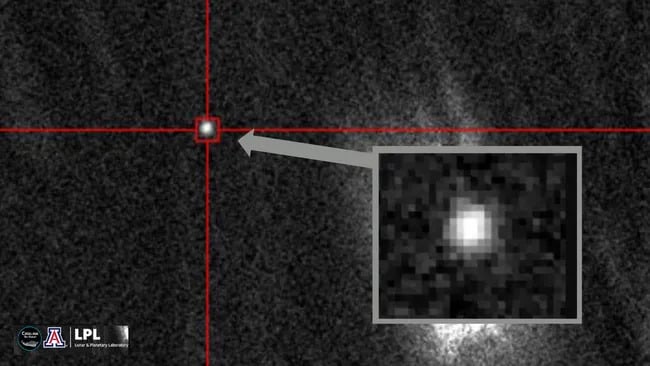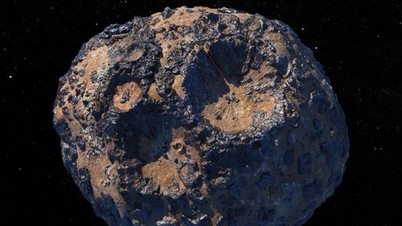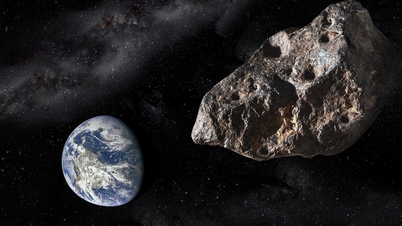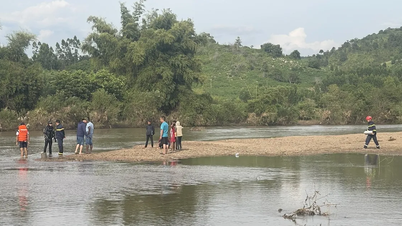(CLO) Asteroid 2024 YR4, nicknamed the "city killer", is causing concern among scientists as it has a 1 in 43 (2.3%) chance of colliding with Earth on December 22, 2032.
Measuring 40 to 90 meters in diameter, it could cause an explosion equivalent to multiple nuclear bombs if it hits the planet's surface. This risk has astronomers rushing to research response plans, as time is running out to act.
This asteroid was only discovered on December 27, 2024 by NASA's ATLAS system and immediately entered the list of dangerous objects of the Center for Near-Earth Object Studies (CNEOS).
The most recent observation, made on February 7 using the Gemini South telescope in Chile, showed it to be about 54 meters across – about the size of a large tower.

Asteroid 2024 YR4 was seen by the 8.1-meter Gemini South telescope on February 7. Photo: LPL
Currently, 2024 YR4 is about 59.5 million kilometers from Earth. By 2025, it will still be too faint to be detected by ground-based telescopes. Scientists will only be able to observe it again in 2028, when it will approach Earth again.
This means about three years of “blindness,” unable to refine its trajectory. If new data confirms a collision risk by 2028, there will be barely enough time to mount any deflection missions.
One possible option is to use the DART method, which was successful in 2022 when a spacecraft attacked and deflected the orbit of the Dimorphos asteroid.
However, 2024 YR4 could be a “rubble pile” – a collection of loosely held pieces of rock. If a spacecraft were to crash into it, rather than altering its orbit, there is a risk that the asteroid would break into many smaller pieces, and continue hurtling toward Earth in different directions.
Another option would be to use a nuclear weapon to deflect it. This would provide more thrust, but also come with significant risks. If detonated too close, it could shatter the asteroid into hundreds of smaller pieces, leading to a larger-scale disaster.
Additionally, international treaties prohibit testing nuclear weapons in space, making this a controversial option.
Scientists are using the remaining time before 2028 to collect more data on 2024 YR4. The James Webb Space Telescope (JWST) is expected to join the observations in March 2025 to provide more information about its composition and structure.
If the collision risk remains high, space agencies may have to rush a deflection mission as early as 2028.
With the clock counting down to 2032, the race to prevent a potential disaster is becoming more intense than ever.
Hoai Phuong (according to Space, Daily Galaxy)
Source: https://www.congluan.vn/tieu-hanh-tinh-sat-thu-ngay-cang-gan-trai-dat-con-nguoi-co-du-thoi-gian-ngan-chan-post334623.html







![[Photo] Prime Minister Pham Minh Chinh launched a peak emulation campaign to achieve achievements in celebration of the 14th National Party Congress](https://vphoto.vietnam.vn/thumb/1200x675/vietnam/resource/IMAGE/2025/10/5/8869ec5cdbc740f58fbf2ae73f065076)






























![[Photo] Bustling Mid-Autumn Festival at the Museum of Ethnology](https://vphoto.vietnam.vn/thumb/1200x675/vietnam/resource/IMAGE/2025/10/4/da8d5927734d4ca58e3eced14bc435a3)






















![[VIDEO] Summary of Petrovietnam's 50th Anniversary Ceremony](https://vphoto.vietnam.vn/thumb/402x226/vietnam/resource/IMAGE/2025/10/4/abe133bdb8114793a16d4fe3e5bd0f12)

![[VIDEO] GENERAL SECRETARY TO LAM AWARDS PETROVIETNAM 8 GOLDEN WORDS: "PIONEER - EXCELLENT - SUSTAINABLE - GLOBAL"](https://vphoto.vietnam.vn/thumb/402x226/vietnam/resource/IMAGE/2025/7/23/c2fdb48863e846cfa9fb8e6ea9cf44e7)

































Comment (0)